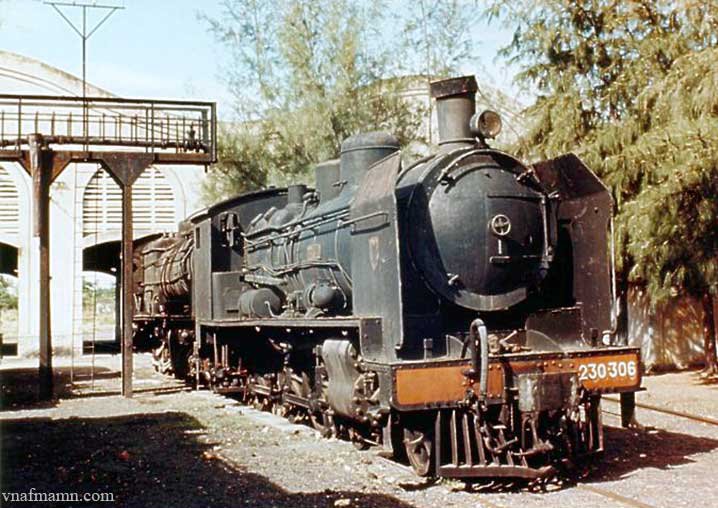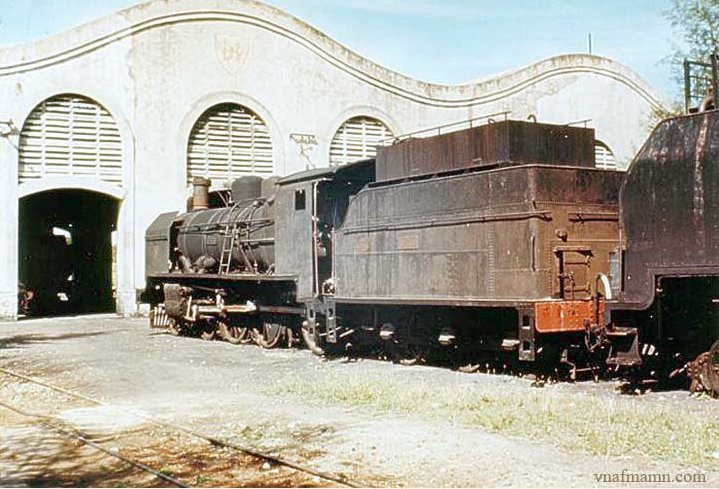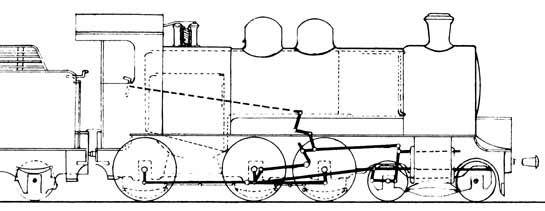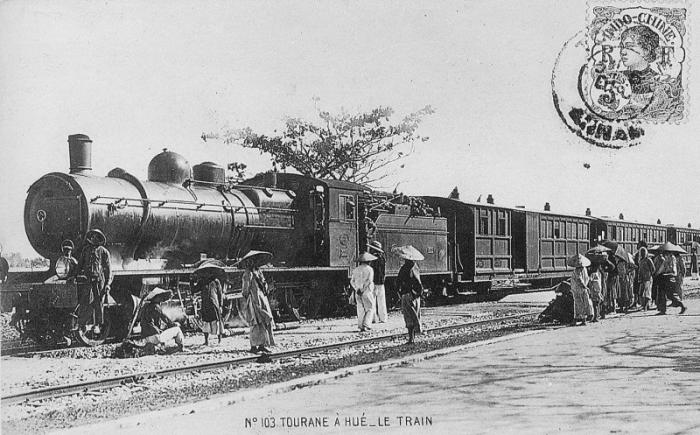
















230 Classes
4-6-0 Wheel Arrangement


The photos were taken at the Thap Cham Station workshop.

Diagram of Indonesian C52 class. Similar, but there are some differences.
4-6-0 Wheel Arrangement

There is very little information
about this locomotive class. These
photos were apparently taken in 1967 of 230-306 and display the coat of
arms of the former southern system as well as the narrow gauge couplers
used by that system.There is a sort of family resemblance to the 141
and 231 classes so perhaps also built by SACM in France?
The following data was provided by J.D.H. Smith. However notice he lists the road numbers starting at 001. All the 230 locomotives seen in photos appear to be numbered from 301. Mr Smith also suggests that the 230's are the same as the Indonesian C52 class, but the drawings of that class are slightly different.
The following data was provided by J.D.H. Smith. However notice he lists the road numbers starting at 001. All the 230 locomotives seen in photos appear to be numbered from 301. Mr Smith also suggests that the 230's are the same as the Indonesian C52 class, but the drawings of that class are slightly different.
| Class | Axle Arr. |
Dr. Dia. |
Cylinders Dia. x Str. |
B.P. | Adh. Wt. |
EW WO |
Grate Area |
Evap Surf. |
Sup. Surf |
Remarks | |
| 230-001 | 2'C | 4-6-0 |
1260 | 400x508 | 12.7 | 25 | 38 | 1.8 | 72 | 35 | PNKA C52 |
There is some information also in
the 'Trains' magazine article. This article also refers to 230-400
class locomotives. There are also several photos.
So we can asume that there was at least a 230-301 class and a 230-401 class. The 230-001 class remains a mistery.
The photo belows shows a very similar locomotive numbered '313' in French colonial times. The second dome is different, as is the cylinder and the cab side window, so this could be an earlier version.


This locomotive is identical to the '313' locomotive. The locomotive number is either '103' or that's the number of the postcard!
So we can asume that there was at least a 230-301 class and a 230-401 class. The 230-001 class remains a mistery.
The photo belows shows a very similar locomotive numbered '313' in French colonial times. The second dome is different, as is the cylinder and the cab side window, so this could be an earlier version.


This locomotive is identical to the '313' locomotive. The locomotive number is either '103' or that's the number of the postcard!
How many members of the class
there were, what happened to them,
whether any were used by the northern system, and whether any survived
re-unification is not known.

The photos were taken at the Thap Cham Station workshop.

Diagram of Indonesian C52 class. Similar, but there are some differences.
Steam Locomotives generally used the traditional
French classification system. A steam locomotive with a 2-8-2 wheel
arrangement is classified as 141 class, a locomotive with 4-6-2
wheel arrangement is classified as 231 class etc. Pretty straight
forward, except what did if two classes had a 2-8-2 wheel
arrangement I'm not sure. It didn't happen so wasn't a problem?
Diesel locomotives have a completely dfferent clasification system.
All diesel classes start with the letter 'D' (for diesel?) then a number which I believe is related to the locomotives power output. The third character defines Electric' (E) or hydraulic (H).
e.g. D5H class = Diesel + 500 hp + hydraulic.
Again, what happens if two classes are the same I don't know.
I am still investigating pre 1975 classifications. Some are the same e.g. 141 steam class, and some are different e.g. 'BB' class instead of D9E.

Created with Kompozer
the Open Source Web Designer
Railways in Vietnam
website © 2009-2014 David Gurnett
Updated January 14, 2014
All images remain the copyright of their
original owners and are reproduced purely
for the purposes of research.
Please feel free to contact me at
railwaysofvietnam@gmail.com